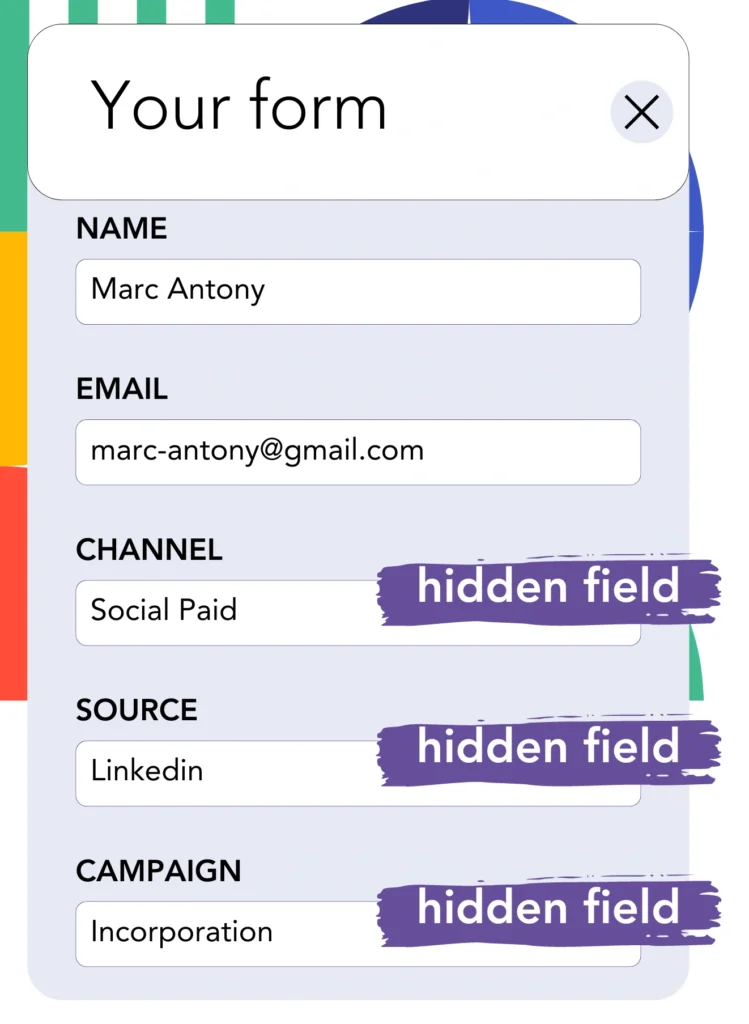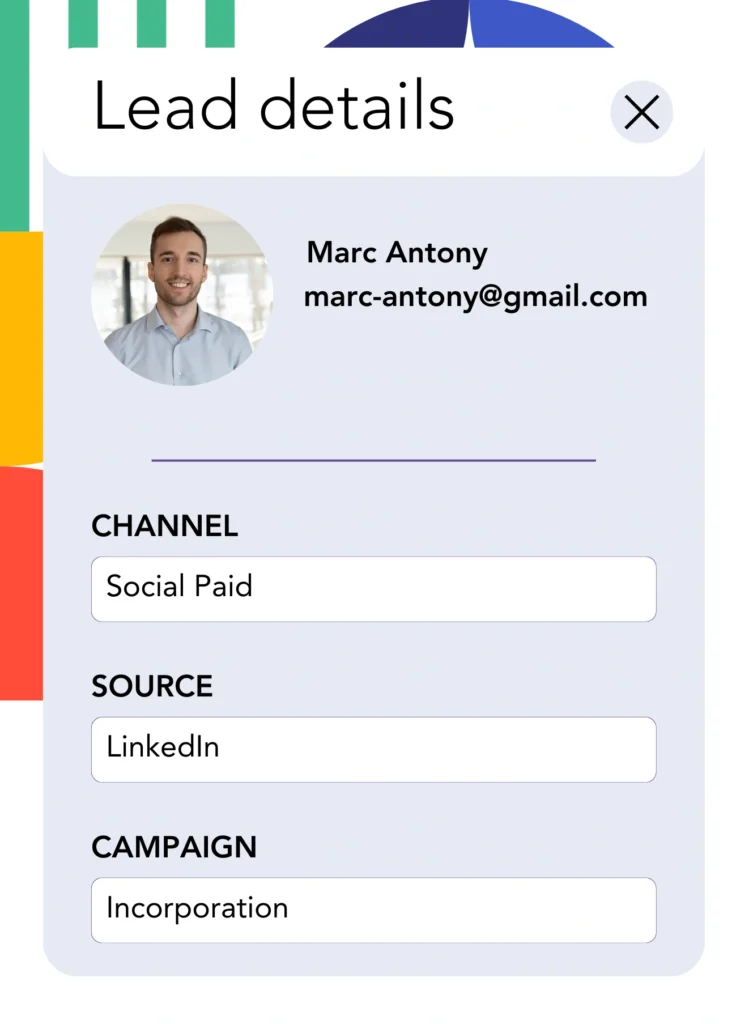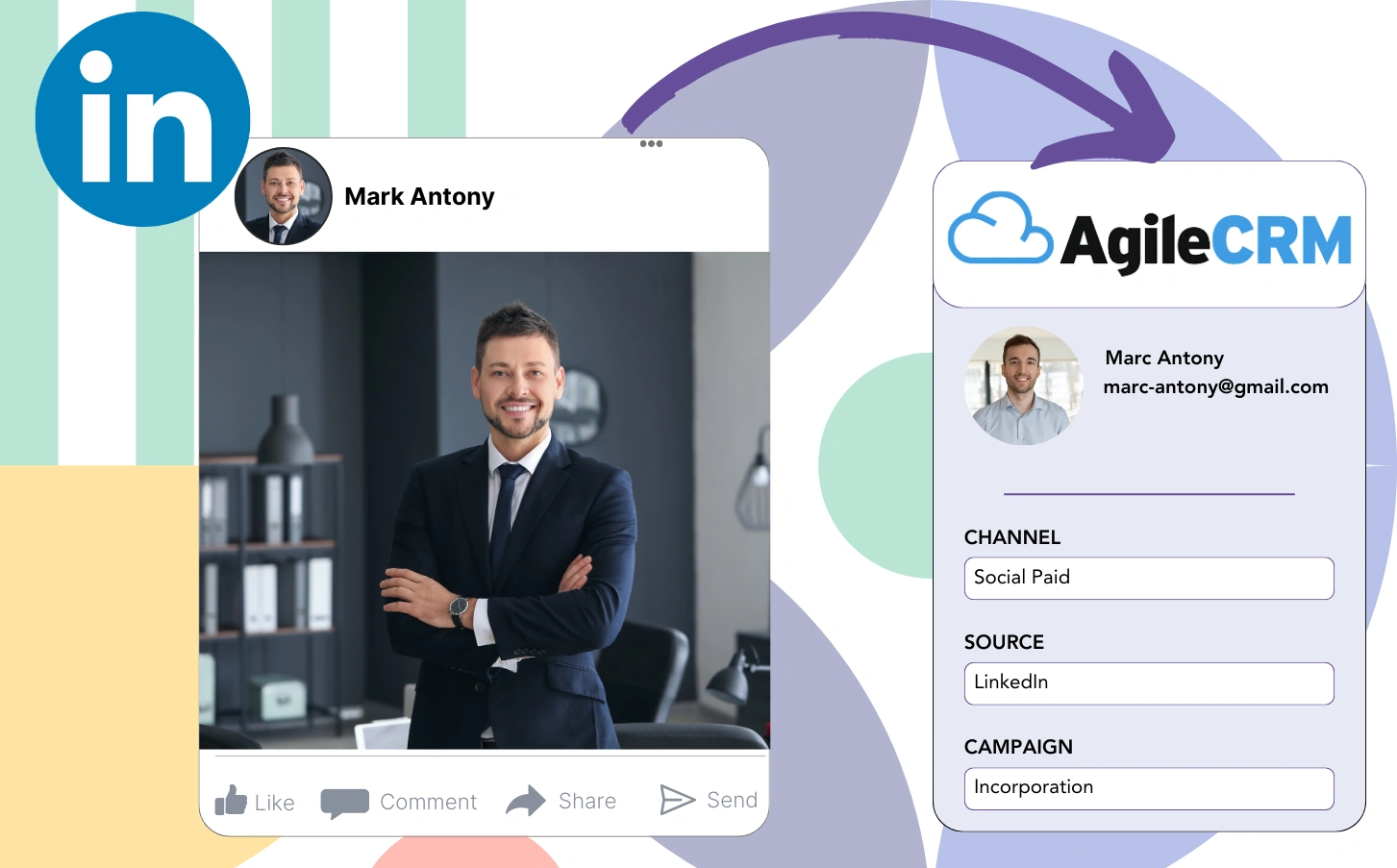You use LinkedIn ads to generate leads that are directed to Agile CRM, yet there’s no method to track which ad corresponds to each lead.
Once a lead is successfully converted into a paid customer, you can’t connect that customer to the LinkedIn ad that initially captured them.
The tracking limitation makes managing your LinkedIn ads more difficult, resulting in simultaneous spending on various ads without knowing which one is generating leads and revenue.
It would be ideal if a tool could link each lead to the LinkedIn campaign group, campaign, ad, and audience that created it.
Let’s dive into it!
How to capture LinkedIn ads in Agile CRM
Step 1: Add Leadsources in the head tag of your website

Leadsources is an effective lead tracking solution that, once added to your website, captures up to 7 distinct data points for every lead generated.
Create an account on Leadsources.io – it’s free.
Insert the Leadsources tracking code into the head tag of your website by following this guide.
Step 2: Add the UTM parameters to your LinkedIn ads campaigns

Add the desired UTM parameters for tracking within your LinkedIn advertisements.
For illustration purposes, you can track the campaign, ad, and audience using these UTM parameters:
- UTM_source=linkedin
- UTM_campaign=campaign-name
- UTM_term=audience-name
- UTM_content=ad-name
Without the need for UTM parameters, Leadsources collects all essential lead source information—such as channel, landing page, and landing page subfolder—to ensure thorough tracking for every lead.
Step 3: Add the hidden fields in your form

Include hidden fields in your form so that Leadsources can directly capture and store lead source data for each submission.
When a new lead finishes your form, Leadsources automatically captures and fills the hidden fields with LinkedIn ads information.
For detailed information on implementing hidden fields, please refer to our guide.
Step 4: Capture the LinkedIn ads data in Agile CRM

When users click on your ads and arrive at your website, Leadsources monitors LinkedIn ads data, which includes campaign, audience, and ad details.
The hidden fields in your form are automatically filled by Leadsources with relevant LinkedIn ads data.
When you submit the form, you can automatically send LinkedIn ads data and your leads to Agile CRM by simply connecting it.
How does Leadsources work?
Once established on your website, Leadsources tracks LinkedIn ads data every time a visitor accesses your site.
This data from LinkedIn ads is stored in the hidden fields of your form and is sent to Agile CRM with the leads details (name, email, etc.) upon form submission.
The following information is monitored by Leadsources for each visitor:
- Channel
- Source
- Campaign
- Content
- Term
- Landing page
- Landing page subfolder
Even without UTM parameters, Leadsources utilizes the referrer to track lead source information.
There are occasions when UTM parameters cannot be utilized, especially when traffic comes from organic channels:
- Google Search
- Instagram bio link
- Social media posts
- Etc.
In such instances, many lead source tracking tools are unable to determine the source of leads because they rely exclusively on UTM parameters for information collection. Conversely, Leadsources continues to collect certain lead source data even when UTM parameters are unavailable:
- Channel
- Source
- Landing page
- Landing page subfolder
Therefore, unlike many competing tools, Leadsources facilitates comprehensive lead data tracking across every channel:
- Organic Search
- Paid Search
- Organic Social
- Paid Social
- Referral
- Affiliate
- Display Advertising
- Direct Traffic
Moreover, Leadsources automatically sorts your traffic by channel, ensuring a clean and structured dataset.
In summary, Leadsources is an easy-to-use and powerful tool that captures complete lead source data from all channels in one central place.
Performance reports: Lead, sales, and revenue by source
By recording LinkedIn ads data in Agile CRM, you can create numerous performance reports, such as:
- Leads, sales, and revenue by channel
- Leads, sales, and revenue by campaign
- Leads, sales, and revenue by ad
- Leads, sales, and revenue by audience
- Leads, sales, and revenue by landing page
- Leads, sales, and revenue by landing page subfolder
Thus, you can modify your LinkedIn budget according to the channel, campaign, ad, and audience that yield your leads, sales, and revenue.
We will now review the different types of reports you can generate.
1. Lead source reports
These reports capture the leads generated by:
- Channel
- Campaign
- Ad
- Audience
- Landing page
- Landing page subfolder
Example #1:
First, use the “Leads by Channel” report to discover the channel that contributes the most leads.

Example #2:
By recognizing LinkedIn as the primary channel, you can focus on analyzing leads from all LinkedIn campaigns.

Example #3:
After identifying the LinkedIn campaign that generates the most leads, you can look into which particular audience or ad is driving those results.

2. Sales and revenue source reports
Even though it’s valuable to know which LinkedIn ads generate the most leads, we must examine their effect on our revenue.
Connect your leads to a CRM like Agile CRM to isolate the leads that converted into paying customers, enabling you to monitor sales and revenue across various channels, sources, landing pages, and more.
You can refine your marketing strategy to concentrate on the channels, sources, campaigns, audiences, and ads that effectively generate revenue.
To further explain, let’s analyze the following example:
| Channels | Search Paid | Social Paid |
| Leads | 50 | 75 |
| Sales | 5 | 6 |
| Average order value | $150 | $100 |
| Revenue | $750 | $600 |
After commencing ads on both Google and LinkedIn, the initial “Leads by Channel” report revealed that Social Paid ads on LinkedIn led to a greater number of leads than Search Paid ads.
However, once you exported your sales and revenue data from your CRM, you discovered that the Search Paid channel brought in higher revenue with a smaller number of leads than the Social Paid channel, resulting in a budget increase for Search Paid.
Moreover, you can create an array of other reports focused on sales and revenue:
- Sales and revenue by source
- Sales and revenue by campaign
- Sales and revenue by content (aka. ad)
- Sales and revenue by term (aka. audience)
- Sales and revenue by landing page
- Sales and revenue by landing page subfolder
LeadSources tracks the source of each lead in Agile CRM, whether they come from ads, organic search, social, email, etc. and syncs that data with each submission. See the full breakdown on the lead source in Agile CRM page.

